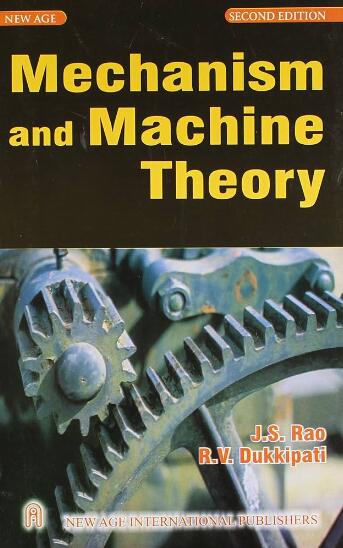Classification of the three-dimensional persistent POE manifolds of SE(3)
IF 4.5
1区 工程技术
Q1 ENGINEERING, MECHANICAL
引用次数: 0
Abstract
The set of rigid displacements of the end-effector of a mechanism is ordinarily a manifold of the special Euclidean group SE(3). The tangent spaces of the manifold form vector spaces of twists describing the end-effector instantaneous motions. The twist space at any generic pose is often required to be a rigidly-displaced copy of the twist space in the home configuration: when this happens the twist space and the corresponding manifold are called persistent. There are three known families of persistent manifolds of SE(3). The first one comprises the Lie groups of SE(3), for which the twist space is invariant and coincides with a subalgebra of the Lie algebra of SE(3). The second family includes the symmetric spaces of SE(3), for which the twist space is a persistent Lie triple system. The third family is a subset of the product-of-exponential (POE) manifolds, which emerge by the product of two or more Lie groups and naturally describe the motion of serial chains. While the classification of Lie groups and symmetric spaces of SE(3) is state-of-the-art, the classification of persistent POE manifolds is yet to be completed. This paper provides the derivation and classification of persistent POE manifolds of dimension 3.
SE三维持久性POE流形的分类(3)
机构末端执行器的刚性位移集通常是特殊欧几里得群SE(3)的流形。流形的切空间形成了描述末端执行器瞬时运动的扭曲向量空间。任何一般位姿的扭转空间通常需要是主构型扭转空间的刚性位移副本:当这种情况发生时,扭转空间和相应的流形被称为持久的。已知SE的持久流形有三个家族(3)。第一类由SE(3)的李群组成,其扭转空间是不变的,与SE(3)的李代数的一个子代数重合。第二族包括SE(3)的对称空间,其中扭转空间是一个持久的李氏三重系统。第三族是指数积流形的一个子集,它由两个或多个李群的乘积产生,自然地描述了序列链的运动。虽然SE(3)的李群和对称空间的分类是最先进的,但持久POE流形的分类尚未完成。本文给出了3维持久性POE流形的推导和分类。
本文章由计算机程序翻译,如有差异,请以英文原文为准。
求助全文
约1分钟内获得全文
求助全文
来源期刊

Mechanism and Machine Theory
工程技术-工程:机械
CiteScore
9.90
自引率
23.10%
发文量
450
审稿时长
20 days
期刊介绍:
Mechanism and Machine Theory provides a medium of communication between engineers and scientists engaged in research and development within the fields of knowledge embraced by IFToMM, the International Federation for the Promotion of Mechanism and Machine Science, therefore affiliated with IFToMM as its official research journal.
The main topics are:
Design Theory and Methodology;
Haptics and Human-Machine-Interfaces;
Robotics, Mechatronics and Micro-Machines;
Mechanisms, Mechanical Transmissions and Machines;
Kinematics, Dynamics, and Control of Mechanical Systems;
Applications to Bioengineering and Molecular Chemistry
 求助内容:
求助内容: 应助结果提醒方式:
应助结果提醒方式:


